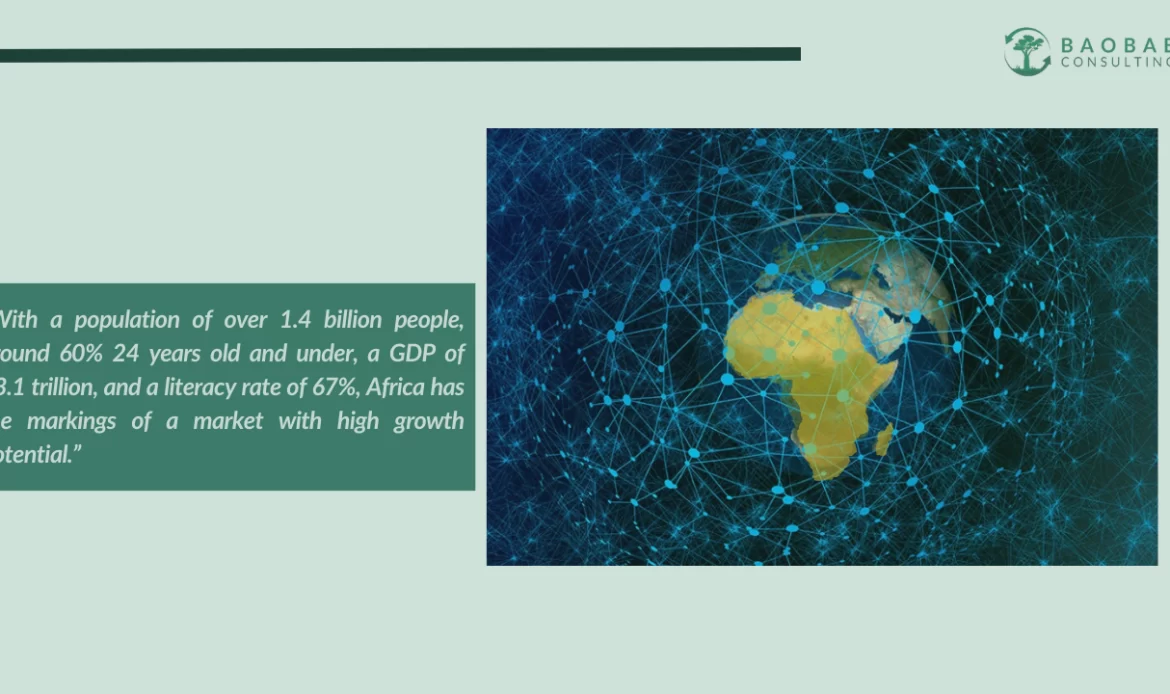By: Dami Fatusi
For African countries and global social development networks, continental transformation and prosperity is hinged on human capital. A strong social sector is a prerequisite for the well-being of any country’s people, because it balances economic growth with social growth. With such great need and a concurrent distrust for the public sector, the social sector in Sub-Saharan Africa has become robust – continually attempting to step up to the challenge of filling missing gaps. In Nigeria alone, there are over 150,000 registered and functional charities, non-governmental, non-profit, and community-based organizations across its 36 states. Despite its impactful work, the social sector has been described as “one mile long and one inch deep” due to its failure to significantly improve socio-economic indexes over multiple decades. Facing continental decline in development matrices over the last decade, such as rising inequalities, increased poverty, decreased Gross Domestic Product and Purchasing Power Parity, reduced social protection, increased civil unrest, amongst others, the social sector needs to invest in maximizing its productivity.
“How can social development organizations operate sustainably enough to address human development challenges that threaten Africa’s growth potential?” From financial to macroeconomic to social performance factors, research shows that the otherwise vast impact of the social sector has been undermined by multiple global, industry and firm challenges that threaten the sector’s productivity, one being poor organizational and sectoral development. On one hand, the sector faces infrastructural and institutional challenges that are out of its control, including lack of regulation, poor governance, lack of a structured industry framework, limited compliance expectations, minimal economic incentive, and limited barriers to entry that affect many social players on the continent.
On the other hand, the sector’s players face business management challenges because they often are required to prioritize social goals first and business objectives second, leading to challenges in revenue inflow, project management, fundraising, organizational growth, and human resource management. These organizations must maximize their economic productivity and improve their solution-oriented technical capacity if they are to survive amongst sectoral threats like high competition, environmental threats like regulatory changes, and global threats like reduced funding.
The Compassionate-heart-commercial-mind approach is a better management strategy for the social sector that is as strategic and intentional as a private sector approach. While the private and social sectors differ in many aspects – their raison d’être, budgets, legal requirements and bottom lines – leadership is leadership and management is management. In order for the social sector to maximize its impact, they should consider running like a business, whereby they align costs and social impact to deliver real life-changing results. These five organizational development steps will fortify the sustainability and viability of social impact organizations.
- Organizational Strategy
An effective business strategy serves as the “brain” of the organization and blueprint for the different aspects of running any business, from hiring to organizational structure, to ensure the ultimate fulfillment of the organization’s mission and vision. Seen as critical in private sector organizations, social impact firms do considerably less in implementing strategic planning activities. Strategic planning is essential for identifying goals and achieving them. Organizations then track and evaluate their programs against these goals to identify areas of improvements and mechanisms to progress.

Bloomerang lists 8 broad objectives for a social impact organization’s strategic planning process. At least annually, organizational leadership should comprehensively and holistically discuss these areas and determine the prior steps necessary to execute their vision. For Strategic Planning templates, models and samples: See Bloomberg’s Nonprofit Strategic Planning: The Ultimate Guide + Examples.
2. Processes
Operations is what separates one social impact organization from another, especially regarding international financing. Nonprofits need to invest in the day-to-day operations of their organization, both internal and external processes. One of the best ways to do this is to build firm infrastructure and invest in technology that supports the execution of processes. They must ensure that every aspect of the service value chain (data analysis/ research, service production, service provision, and marketing) is not only covered in terms of quantity and quality, but is checked thoroughly for quality assurance, compliance and legal, financial, and social risks. This way, final products and services produced are not only fool-proof but exude quality to encourage repeat partners. Nonprofits should seek sources of unrestricted funding from donors to fund organizational development initiatives.
3. Organizational Culture
While strategy is the brain of the organization, culture is the heart of it. From employee benefits to stakeholder meetings to partnership development (local and international), to professional development to everyday bonding activities, community relations, it is important to invest in factors that can improve the organization’s employee value output and social capital. Social sector organizations, especially those working in rural African communities, must continually ask themselves questions like:
- “If our employees worked at a Fortune 500, would they be treated in the same way this organization treats them or better?”
- “Are our benefits competitive enough to retain and attract the talent we desire? If not, how are we filling the gaps?”
- “What is our employee turnover rate?”
- “If our funders were venture capitalists, shareholders, or investors, would they be happy? Would they have withdrawn their funding and support by now?”
- “Suppose your community or target market were paying customers, would they be repeat customers? What would be your customer retention and acquisition rate? How diverse are your stakeholders?”
If the answers to these questions are not favorable, consider investing in organizational culture and people relations. While it is difficult for rural, often underfunded organizations to financially invest in employee well being, they should invest time and effort into treating their employees with respect and value.
4. Operations
Routine organizational audits (financial, team/productivity, stakeholder, even cultural audits) can inform organizational strategy. Management must make a conscious effort to ask questions about their failures and address them for future purposes. The sector is fast-paced; any lag in operations can affect projects and productivity. There are numerous funding sources available to African social impact organizations. Oftentimes, the competition on many of these opportunities are stiff and the project turn-around period is short, thus, organizations must be agile in both their operations and process improvement. This is usually a problem with many nonprofit managers, as they are not supply chain/ operations specialists or business analysts. To tackle this issue, nonprofits should hire the right employees and adopt the right technology. Leadership that positions their organization well along these factors will bring multiple revenue generation opportunities.
5. Growth and Business Development
Due to funding and cultural barriers, smaller social impact organizations in Sub-Saharan Africa invest considerably less on growth activities compared to their larger counterparts. As a result, grants and financing rotate among the same big players, with little or nothing trickling down to smaller, grassroots organizations. Sales and marketing strategies can prepare small organizations to put their work, vision, mission, and capabilities out there. Nonprofits should always have websites and multiple social media pages where they post pictures of their work, staff, and employees. They should attend conferences to network and build partnerships.
Read last month’s white paper on how to build your brand. Investment in growth and business development will bring consistent financial inflows.
Once organizations secure the necessary funding, they can use it to develop their organization further through maximizing the resources they have. Here’s how:
- Build a sustainable funding model with multiple revenue streams: “Lease out” your qualified staff for a fee. Apply for grants from donors willing to offer unrestricted funding, so that you can invest in strategic organizational development. Build competitive products through developing expertise in an area or topic is one of the ways to ensure a regular inflow of projects.
- Build social capital through service delivery: When you view your nonprofit as a service provider, social sector organizations will begin to charge more for their work. As more stakeholders work with you and speak to their colleagues about you, your time and resources become more valuable.
- Expand through partnerships: This month, Baobab Consulting co-hosted the Lauder Symposium, partnering with Ashoka, MIT, and Strathmore University. Leverage on Nigerian and Egyptian markets if your product is fintech related. With the United Nations and Africa Development Bank increasing funding for entrepreneurship, industry, and gender equality projects, do not be afraid to venture into these new topics or acquire the necessary know-how. However, make sure to find the correct partners on the ground to help you with that expansion.
Conclusion
A 21st century organization must balance its environmental and social impact with its economic sustainability if it is to be optimally productive and competitive. The sector can elevate itself and reduce its challenges by adopting a strong business strategy, in order to ultimately bring its home country towards better socio-economic performance. High-impact operations will bring socio-economic development, but nonprofits will need profitability to be sustainable. Social impact organizations are legally recognized as “businesses” and in the age-old words of Thomas Friedman, “The aim of a business is to make profit.” For a social-impact organization, this “profit” is not only in current impact, but in continuing, sustainable impact and in liquidity – results that can only be obtained from optimal organizational development and business management.
About the Author
Dami Fatusi is an International Business Attorney and a Management Consultant. She serves as Baobab Consulting’s Legal, Operations and Strategy Consultant. Dami is licensed to practice law in multiple continents and boasts of both an LL.M (Masters of Laws) and an MBA (Masters of Business Administration) degree with specializations in International Business. She is passionate about international development operations, social sustainability projects, and public and social sector consulting. She has over 7 years of experience in managing local and international social impact organizations.






